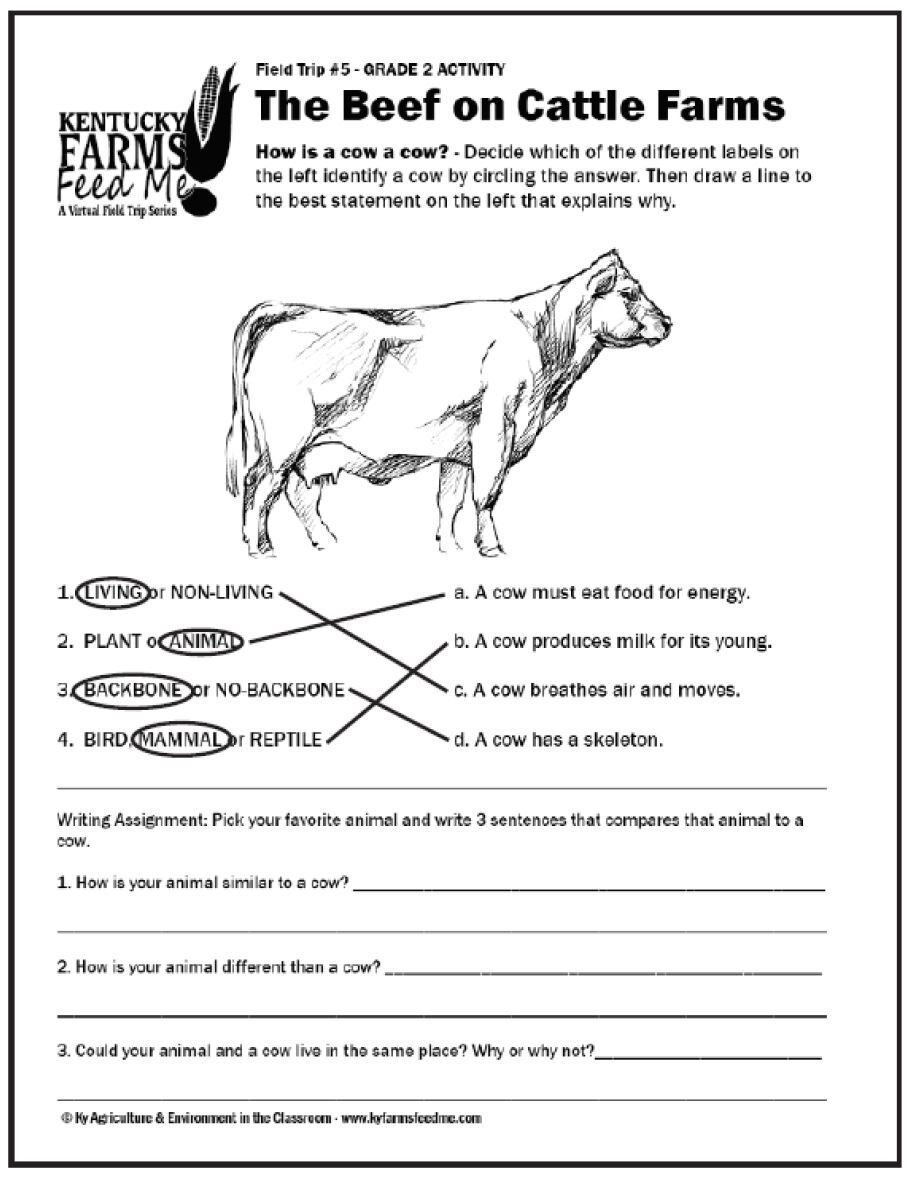Beef Cattle Structures, Needs and Habitats
Authors: Jennifer Elwell
Grade Levels: Primary
Purpose
Students will learn how a cow’s environment provides what it needs.
K-ESS3-1. Use a model to represent the relationship between the needs of different plants or animals (including humans) and the places they live.Students will learn what a cow needs to survive.
K-LS1-1. Use observations to describe patterns of what plants and animals (including humans) need to survive.Students will think of tools that are related to parts of a cow.
1-LS1-1. Use materials to design a solution to a human problem by mimicking how plants and/or animals use their external parts to help them survive, grow, and meet their needs.Students will examine a cow’s ecosystem.
2-LS4-1 Make observations of plants and animals to compare the diversity of life in different habitats.
Main Ideas
Kentucky farmers raise more beef cattle than any other state east of the Mississippi River.
Beef calves can be born in the spring or the fall. Farmers manage their herds this way, so beef is available all year.
Beef cattle have inherited traits that allow them to produce more meat than cattle used to produce milk (dairy cattle).
Beef cattle feed on plant foods to grow and provide food for humans.
Beef cattle provide natural, renewable resources used in many nonfood items.
These activities may accompany the Kentucky Farms Feed Me Virtual Field Trip – Visit a Beef Cattle Farm video.
Activities
BEFORE WATCHING THE VIDEO
Interest Activity: How is a Cow a Cow? (K-2)
How do you know a cow is a cow?
OPTION 1: Have the students describe a cow (female bovine) in their own words or by using similes. This could be a writing exercise. Draw, if you like, what they are describing in the front of the room.
OPTION 2: Provide the following description of a cow. Have the students draw their interpretation and see if anyone can guess that their animal is a cow along the way.
1. This animal has a body like a wide barrel, lying on its side.
2. This animal has 4 legs, each like a baseball bat.
3. This animal has a neck like a tree stump.
4. This animal has a head like a plastic cup, bottom side out.
5. This animal has ears like footballs.
6. This animal has a tail like a snake with a beard.
7. Some have horns, some do not.
8. Some give milk, when you pull on their four spouts.
WHILE WATCHING THE VIDEO
Have the students watch the beef cattle and notice their behaviors and their environment. This will be helpful for the activities that follow.
AFTER WATCHING THE VIDEO
Have students complete one or more of the grade-appropriate activity sheets listed and discuss as a class. These images are the answer keys.
Activity Sheet 1 (K/1)
What does a Cow Eat and Drink? - Where Does a Cow Live?
Digging Deeper: Create a diorama of a cow’s habitat.
Google Slide Version - Be sure to make a copy to your won drive to manipulate the slide contents and share with your students.
Activity Sheet 2 (K/1)
Form to Function
Digging Deeper: Discuss tools we use that may have been influenced by a cow - Is a flyswatter like a cow’s tail?
Google Slide Version - Be sure to make a copy.
Activity Sheet 3 (Grade 2)
How is a Cow a Cow?
Have students share how their animals are similar and different than cows and if they could or could not live in the same place.
Google Slide Version - Be sure to make a copy.
Activity Sheet 4 (Grade 2)
Video Comprehension
Some items may not have been named in the video, but all items do have cow components.
Google Slide Version - Be sure to make a copy





